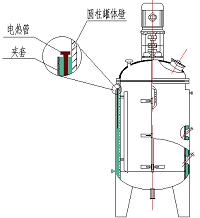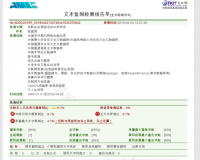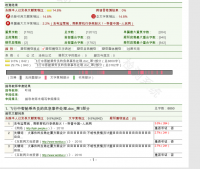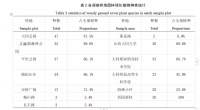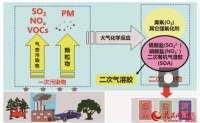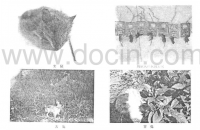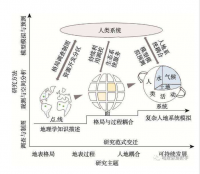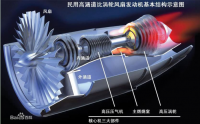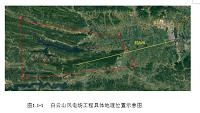小型化LBP生化发酵专用设备初步研究
摘 要
目前,生活垃圾处理方法大多采用卫生填埋、焚烧、堆肥等方法,但这些方法都在一定程度上对土壤、地下水和大气都造成现实或潜在的危害。生活垃圾中含有约40%的有机质,经过机械液化可以获得液态垃圾有机质浆液,采用厌氧发酵的方法进行深度处理,不仅可以获得沼气,还可以得到纯生态的有机肥,从而达到资源化的目的。因此,垃圾有机质液化与厌氧发酵是一种处理生活垃圾的理想方法。
本论文通过收集、查阅大量国内文献资料,对厌氧发酵过程原理以及目前厌氧反应器的发展进行了较为详细的概括和总结。厌氧反应器的发展按照工艺特点分为三代,每一代的性能都更加优越。但是,垃圾有机质浆液的物料特性与一般的有机废液不同,且垃圾有机质浆液的成分更为复杂。现有的厌氧反应器在处理有机垃圾时在进出料、和气体导排等存在许多问题,尤其是物料的停留时间无法保证。故现有的厌氧反应器并不能满足液态垃圾发酵的要求。
本论文着眼于现有厌氧反应器的改进。以发酵罐为原型,针对液态垃圾发酵工艺的特点与要求,进行设计与选型。本论文研究1m3液态垃圾发酵罐的选型和计算.发酵罐以机械通风搅拌发酵罐为基础。由于液态垃圾采用的是厌氧发酵,无需溶解氧,故而取出通气装置。在此,设计的最大重点在于搅拌混合与温度控制两个方面。在搅拌器的选型上考虑能耗,选用弯叶式开启涡轮搅拌器,有助于降低搅拌所需要的轴功率。在温度控制方面,一般情况下,大型的发酵罐不需要加热,因为发酵过程中会产生大量的热,通常考虑冷却情况加多。在本论文中考虑了发酵罐相对较小,故考虑了冷却和加温两种情况。发酵罐的温度控制依靠的是夹套,通过向夹套通入冷水(自来水)冷却或接通夹套内电热管加热来控制发酵的温度。
关键词:生活垃圾;有机质垃圾液化;厌氧反应器;发酵罐;设计与选型;搅拌器;温度控制;
Abstract
Currently, municipal solid waste disposal method is mostly usedsanitary landfill, incineration, composting and other methods, but these methods were to some extent, on soil, groundwater and the atmosphere are causing real or potential hazards. MSWcontains about 40% of the organic matter can be obtainedthrough the mechanical liquid slurry of liquid organic waste,anaerobic fermentation using advanced treatment methods, not only can get gas, you can also get pure ecological organic fertilizer, so as to achieve resource-oriented Purposes.Therefore, the waste liquid and the anaerobic fermentation of organic matter is an ideal treatment method for municipal solid waste.
This paper, through the collection, access to large amounts of domestic literature, the principle of anaerobic fermentation process and the current development of the anaerobic reactor in a more detailed summary and summary. The development ofanaerobic reactors is divided into three generations according toprocess characteristics, the performance of each generation are more superior. However, the material characteristics of wasteorganic matter in the slurry of organic waste in general is different from the composition of the slurry and the waste organic matter is more complex. Existing anaerobic reactor treating organic waste material in and out of time, and gas there are many problems such as lead row, especially residence time of material can not be guaranteed. Therefore, the existing anaerobic reactor can not meet the requirements of the fermentation liquid waste.
This paper focuses on the existing fermentation reactor improvements. Fermentation process for the liquid waste characteristics and requirements of the anaerobic fermentation tank design and selection. In this study, the liquid waste fermentation tank 1m3 Selection and calculation. The selection fermenter stirred fermentation tank by mechanical ventilation as the basis for design. Liquid waste is used in the anaerobic fermentation, the biggest focus of mixing and temperature control. Selection of the stirrer, select the six flat blade turbines blender.Taking into account the temperature control cooling and heating two cases. Directly by the cooling water cooling. Considerations for heating, cooling water in the jacket heater to add heat to ensure that the best temperature.
Key words: Municipal solid waste; organic waste liquid; anaerobic reactor;fermentation tanks; design and selection; mixer; temperature control;
目 录
前言
1 概述 2
1.1 生活垃圾的定义 2
1.2 生活垃圾的危害 2
1.3 生活垃圾的处理及研究现状 3
1.3.1卫生填埋 3
1.3.2焚烧 3
1.3.3好氧堆肥 4
1.3.4其他方法 4
1.4 厌氧发酵法处理生活垃圾有机质的研究及应用现状 5
1.5 厌氧反应器技术进展 5
1.5.1第一代厌氧反应器 6
1.5.2第二代厌氧反应器 6
1.5.3第三代厌氧反应器 7
1.6 本论文研究的主要内容、研究目的和意义 8
2 设计原理和设计方案 9
2.1 厌氧发酵的基本原理 9
2.1.1两段理论 9
2.1.2三段理论 10
2.2 有机固废厌氧发酵的影响因素 11
2.2.1温度 11
2.2.2 pH值 12
2.2.3厌氧环境 12
2.3 液化垃圾有机质溶液的性质 12
2.3.1液化有机质浆液营养组分 12
2.3.2粘度的确定 13
2.4 发酵罐的设计方案 14
3 机械通风发酵罐的设计说明书 16
3.1 主要几何尺寸 16
3.1.1D、H的确定 17
3.1.2容积的确定 18
3.2 搅拌器的选择 18
3.2.1搅拌器的作用 18
3.2.2几种常用的搅拌器 18
3.2.3搅拌器的选型和计算 20
3.2.4挡板的计算 20
3.3 搅拌功率的计算 21
3.3.1搅拌转速的确定 21
3.3.2 搅拌功率的确定 21
3.3.3电机功率Pw 23
3.4 传热面积的计算 23
3.4.1发酵产生的热量 23
3.4.2冷却面积 23
3.4.3核算夹套冷却面积 24
3.4.4发酵加热情况的考虑 24
3.5 壁厚的计算 26
3.5.1罐圆柱体部分壁厚的计算 26
3.5.2封头壁厚的计算 26
3.5.3夹套的壁厚的计算 27
3.6开孔与管道连接 28
3.6.1液态垃圾厌氧发酵罐的主要开孔 28
3.6.2接管尺寸的确定 29
4 结论 30
参考文献
[1] 李国学.固体废物处理与资源化[M].北京:中国环境科学出版社,2005:1-511.
[2] 席北斗.有机固体废弃物管理与资源化技术[M].北京:国防工业出版社,2006:1-76.
[3] 中国环境质量公报2003 年
[4] 孙艳、陈秋玲、刘伟.生活垃圾的处理方法[J].中国资源综合利用,2003.10:27-29.
[5] 赵由才、牛冬杰、柴晓利.固体废物处理与资源化[M].北京:化学工业出版社,2006:1-242.
[6] 汪群慧.我国生活垃圾的处理技术研究[J]. 哈尔滨商业大学学报(自然科学版), 2003.02:
63-68
[7] 曹作中.当前我国生活垃圾处理发展方向探讨[J]. 环境保护, 2001.10:13-18.
[8] 施阳.我国垃圾处理现状及2010 年前发展的展望[J].建设机械技术与管理2001.09:22-24.
[9] 胡文容,煤矿矿井水及废水处理利用技术,煤炭工业出版社,1998:8-32.
[10]许保玖. 给水处理理论.北京:中国建筑工业出版社,2000:58-62.
[11]崔玉川,杨云龙,谢锋.煤炭矿井水处理利用技术进展.太原工业大学学报
[12]Young,J C and McCarty P L.J.WPCE 1969,Vol(1):5-160.
[13]Lettings,G and AC Van Haadel.Anaerobic digestion for energy production and
environmental protection[M].1993:39-817.
[14]Iza J.Et a1.Anaerobic Fluidized Bed Reactors(AFBR) Performance and Hydraulic
Behavior[M].Anaerobic Digestion 1988,2:63-155
[15]贺延龄.废水的厌氧生物处理[M].北京:中国轻工业出版社.1998:3-120.
[16]Kato M T,Field J and Kerebezerm R et a1.Treatment of low strength soluble wastewater
in UASB reactors[J].Journalof Fermentation and Bioengineering.1994,77(6):85-679.
[17]孙振世,陈英旭,杨哗.UASB的启动及其影响因素[J].中国沼气,2000,02:9-17.
[18]于军.内循环UASB技术及其生产性试验研究[J].给水排水,2000,04:4-14.
[19]王凯军,左剑恶,甘海南等.UASB工艺的理论与工程实践[M],中国环境科学出版社,2000:16-20.
[20]袁秋笙.UASB反应器的结构与设计方法[J],江苏环境科技,1999,02:79-85。
[21]任洪强,丁丽丽,陈坚.EGSB反应器中颗粒污泥床工作状况及污泥性质研究[J],环境科学研究,
2001,03:34.
[22]陈广元.附加气循环IC反应器处理低浓度有机废水[J],中国沼气,2002,4.
[23]龚钢明,邵希豪等.IC厌氧反应器的内循环装置[J],中国沼气,2002(1).
[24]马三剑,吴建华,刘锋等.多级内循环(MIC)厌氧反应器的开发应用[J],中国沼气,2002,4:
8-14.
http://www.bysj1.com/ http://www.bysj1.com/html/5215.html http://www.bysj1.com



